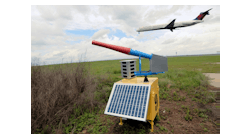Dec. 25--An animal advocacy group, Friends of Animals, filed suit Monday against several federal agencies over the recently halted practice of shooting snowy owls near the runways of John F. Kennedy International Airport in New York.
The suit's defendants include the U.S. Department of Agriculture, the Animal and Plant Health Inspection Service, and the U.S. Fish & Wildlife Service, said Michael Harris, the attorney representing Darien-based Friends of Animals.
"The fact that they stopped the shooting doesn't make this a moot point," Harris said. "Not only could this program of shooting owls resume at any time, but also because we need to know their guidelines for shooting this and other animal species."
The Port Authority of New York & New Jersey, which oversees JFK, LaGuardia and Newark Liberty airports, said five planes at the three airports have struck snowy owls in recent weeks.
Port Authority officials also said two snowy owls were shot before the practice was suspended; Friends of Animals puts the number at three in its lawsuit, which was filed in the U.S. Federal Court, Eastern District of New York, Brooklyn, Harris said.
Snowy owls were spotted regionally this fall because their usual home turf this time of year, the tundra surrounding Hudson Bay, has seen a decline of their favorite food, the lemming.
This isn't called a migration but rather an irruption, which is when birds are seen in places where they don't usually frequent.
"People remember that owl from the Harry Potter movies," said Priscilla Feral, FOA's executive director. "There's outrage over this. It's kind of a sick idea. But that aside, we're saying in the lawsuit that the law does not protect this killing of the snowy owls, and that they have violated environmental laws in doing so."
Feral said there's a bird refuge adjacent to JFK, and airport administrators need to have better policies in place with regard to controlling wildlife.
"They have to stop thinking that everything that flies over the airport has to be shot," she said.
Terri Edwards, a spokeswoman for the U.S. Fish & Wildlife Service, told Hearst Connecticut Newspapers that her agency issues the permits to major airports that enable them to control threatening animal populations. The permits are issued annually under the Migratory Bird Treaty Act.
"In almost all cases, non-lethal control efforts are used," Edwards said. "Noise, scare tactics, that kind of thing. But in certain cases -- when there's an emergency situation -- the permit does authorize lethal takes."
Edwards said, to her knowledge, it's up to the discretion of the airport to decide the best way to take care of the situation. Edwards said she couldn't comment on the FOA suit because it was just filed.
Just about everyone is in agreement that the Canada goose -- particularly the heavier, non-migratory variant of the species -- poses a threat to commercial aviation. The geese fly in formations of dozens, and each goose typically weighs about eight pounds or more.
But Feral is quick to point out that a snowy owl and a Canada goose are vastly different animals.
"For starters, the snowy owl doesn't fly in flocks," Feral said. "In fact, they prefer to stay away from one other."
Plus, there's not much to them, she explained.
"They're mostly feathers," Feral said. "Shave off the feathers, and there really isn't much there except for two big eyes."
All of that aside, could a snowy owl take down a Boeing 767? Not a chance, according to the Federal Aviation Administration.
This is because all commercial aircraft engines must pass what's referred to in the industry as the "chicken test" as stated in Part 33, Subpart E, Section 33.76 of the FAA's "Airworthiness Standards: Aircraft Engines" regulations.
The regulations describe the bird ingestion tests that running turbofan engines must pass before they are certified. The tests are performed with engines operating "at no less than 100 percent takeoff power," and store-bought chickens are typically used to assess bird-strike performance.
"Engines are designed to withstand bird ingestion," Jim Peters, a spokesman for the New England Region of the FAA, told Hearst Connecticut Newspapers.
Still, the U.S. Department of Agriculture, which has assisted airports in various animal-control efforts since the 1980s, maintains that snowy owls -- those yellow-eyed, balls of white fluff -- do indeed pose a danger to flying machines.
"In looking at records in the FAA's strike database, out of 66 birds (species), snowy owls rank 17th," said Carol Bannerman, a spokeswoman for the USDA. "They can be damaging."
She said neither the USDA nor other "government agents" were directly involved in the owl shootings at JFK, despite some media reports to the contrary.
Officials with the Port Authority said on Dec. 9 that they would implement a program to trap and relocate the birds.
"The Port Authority's goal is to strike a balance in humanely controlling bird populations at and around the agency's airports to safeguard passengers on thousands of aircraft each day," the agency said in a prepared statement.
The FOA lawsuit notes that the snowy owl is the darling of children, teens and young adults everywhere, thanks to the Harry Potter franchise of books, movies, dolls, accessories and such.
It's "a species widely familiar to children as Hedwig, the beloved pet of boy wizard Harry Potter ... ," the lawsuit states.
[email protected]; 203-330-6403; http://twitter.com/johnburgeson
Copyright 2013 - Connecticut Post, Bridgeport


